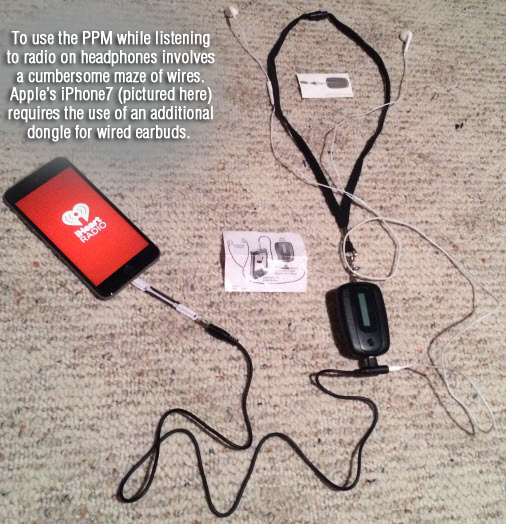
These days, radio broadcasters have a lot on their plates. Many of the “givens” that were firmly in place since the early days of the medium are now on shaky ground.
Radios are disappearing in homes and workplaces, their status in cars is being crowded out by other media delivered via smartphones, and smart speakers introduce an entirely new set of opportunities – and challenges – to a medium that has always been known for its ubiquity.
Not anymore.
Now, companies that have always depended on radio being everywhere are now in the process of rethinking the fundamentals:
What kind of company are we? And what kind do we want to be? Do we have the right people in place and do they have the willingness to change the way they’ve always operated in order to adjust to the new realities of media content and distribution?
In the middle of all this, radio by all accounts is not having a stellar year. Radio sales teams are being challenged like never before, trying to make the case for a medium that’s been part of the media fabric for nearly a century.
In this environment where the certainties are anything but, another issue – and a potentially important one – is looming as a silent assassin. As radio companies operating in PPM markets struggle with the issue of whether to Total Line Report – or not – the ongoing question of measurement continues to rear its ugly head.
The theme here is quiet. Last month, Inside Radio quietly ran a story reporting on a survey conducted by The Diffusion Group that reports headphone penetration shot up by 20% last year.
Sit down for this one:
More than three-fourths of adults (77%) now own earbuds or headphones. (You can only imagine the percentage among those under 18).
In fact, as many people own these devices as laptop computers. And a visit to most modern offices reveals an eerily quiet environment as workers sit in cubicles privately listening to their preferred audio. It’s the same thing on airplanes, libraries, and Starbucks.
And no one knows why.

Part of this is undoubtedly due to the reality that earbuds now come standard with just about every mobile device purchased. As smartphones and tablets have become standard equipment for consumers, earbuds come along for the ride. But many are never used, taking a back seat to headphones. The Distribution Group’s principal analyst, Michael Greeson, notes, “This speaks to the widespread appeal of today’s headphones. Whether purchased for a better audio experience or to score cool points, headphones are in demand.”
The fact is, no one knows why this is happening, but like any trend that impacts audio consumption, it ought to be on the radio industry’s increasingly crowded radio screens?
You may be asking, what does this have to do with radio, as long as consumers are listening on one device or another?
In the biggest markets, everything.
More and more audio consumption is moving to headphones so streaming measurement becomes more critically important to a medium trying to transform itself.
And in PPM, whether it was Arbitron back in the earliest days of the methodology or in today’s unstable environment, headphone measurement in a metered panel has always been questionable.
That’s because it in order to capture “silent listening” on earbuds and headphones (remember, the meters only measure audio it can “hear”), a dongle has been provided to PPM families.

Yet, it is clunky, cumbersome, and yet one more speed bump to participating in a Nielsen radio panel. Last year, consultant Randy Kabrich offered up his interpretation of the Rube Goldbergian dongle that connects an audio source to both the PPM meter and headphones.
Nielsen has consistently claimed this isn’t a problem, but logic suggests otherwise. And even many of the old Arbitron team quietly raised their eyebrows when asked about the headphone measurement problem its company was trying to solve.
And so here we are, in the midst of a mediocre revenue year entering budget time. And market managers, CFOs, and other prognosticators are tasked with projecting their companies’ financial fortunes in a landscape that keeps spinning uncontrollably.
In an unpredictable media world, Nielsen could lend an important degree of confidence to its many radio clients by conducting fresh research to address these rapidly changing respondent behaviors. Are panelists consistently using these dongles? And if not, what other measurement solutions can be designed to ensure radio is keeping up with the Digital Joneses?
Whether it is media buyers and planners, radio executives and their staffs, or the MRC, it’s a matter of confidence and trust – perhaps now more than ever. The old rules are being cast by the wayside in place of new media content and new distribution outlets. Radio can prosper in this environment if it is being measured accurately and fairly.
These days, that’s a big IF.
- How Will Radio Fare In The Battle For The Fourth Screen? - April 3, 2025
- Like A Pair Of Old Jeans - April 2, 2025
- What’s Fair Is Fair - April 1, 2025




Please remember that Nielsen is a humorless, poorly run company that does not understand radio or radio executives. I blame Arbitron for selling our business to these jokers. Hopefully the other services will ovewhelm Nielsen and put an end to this joke. When I first brought up the earphone issue 15 years ago at a consultant gathering, not one of my colleagues jumped up and said “He’s right” instead they got more brownies at the buffet.
Walter, as you knew back then and we continue to ruminate over now, this IS an issue. I know it has been tackled by the Advisory Council, but it’s headphone research like this that forces the issue, yet again. Thanks for the comment and the support. And don’t eat too many of thoese brownies.
We got a winner. No more calls.
My ENT Doctor said you would not believe how much damage ear buds do to your ears . Its shocking and note worthy why kids say Huh? Alot
I’m not worried. I only listen to Screamin’ Scott with the speakers cranked up.
As bad as this problem is with wired headphones/earbuds it doesn’t take into account the trend to wireless listening. When you are listening wirelessly the meter has no way to connect to anything. And we both know that wired headphones/earbuds are rapidly becoming dinosaurs.
And things get even more complicated. Thanks, Michael.
Fred you suggest Nielsen do more research..it looks like they are. The latest study has to do with them finding a new buyer. Accurate research is more difficult to achieve than ever so them bailing from the business would only help. Tom Birch, are you listening?
Researching radio and radio listening is harder than most people think. I’m not cutting anyone slack here, Dave, but many under-estimate the complexity of the rdio reesarch challenge. Thanks for the comment.
This makes me wonder if Eastlan is researching some way to better capture headphone/earbud listening. Given the way Nielsen is appearing not to care (and let’s face facts, that kluge for the PPM was an Arbitron “solution” and not one Nielsen came up with), anyone who finds a way to measure that listening with a reasonable degree of accuracy is going to be in a better competitive position.
The agencies would be the first to jump ship if that happened, because they want to come as close as they can to “seeing” every listener.
This does indeed bear watching.
KM, “recall methodologies” – and that includes Eastlan and Nielsen diary markets – might actually have an advantage over PPM metros. Hopefully, you remember having listened to a streaming station. It’s a gnarly issue, and it’s been with us for a long time now.
If you are suggesting that Eastlan and Nielsen should be investigating ways to improve the accuracy of recall methodologies, I wholeheartedly agree, Fred.
However, this whole issue is hammering nails in the PPM coffin in the interim, methinks.
KM, it’s truly a weakness, but one that has existed since the methodology’s beginnings. What perhaps brings it to an inflection point is gains in streaming and increased ownership and usage of headphones/earbuds as The Diffusion Group points out.
Is Nielsen Audio anywhere near developing a PPM app for smartphones?
Kent, that was discussed back in the Arbitron days, but smartphones aren’t (necesssarily) the panacea everyone thinks. From battery use to privacy issues, there are hurdles to smartphone measurement. That said, because it’s a just about everyone carries all the time, everywhere, there’s always been that potential. Thanks for the comment.
Dear Fred,
You make a very important point in the shift that one is seeing in listening habits. With ‘Personal’ listening of radio that we are seeing (as much as 89% in cities in India listen to Radio on their mobile phones, by Nielsen’s admission) there is a dire need to find a way to measure this consumption.
We invented a tech (and applied for patents subsequently) that has been showcased to the research world that can do this in a very elegant manner. Pls do check out http://www.vtion.in. Will be happy to feed in details and more importantly, demonstrate this framework to you in live condition.
Regards,
Manoj
Manoj, thanks for sending this along. Portable measurement was something Arbitron developed that Nielsen coveted. But it is essential to keep developing technologies in any environment, but especially this one, where media habits are constantly in flux. Appreciate the comment and perspective.